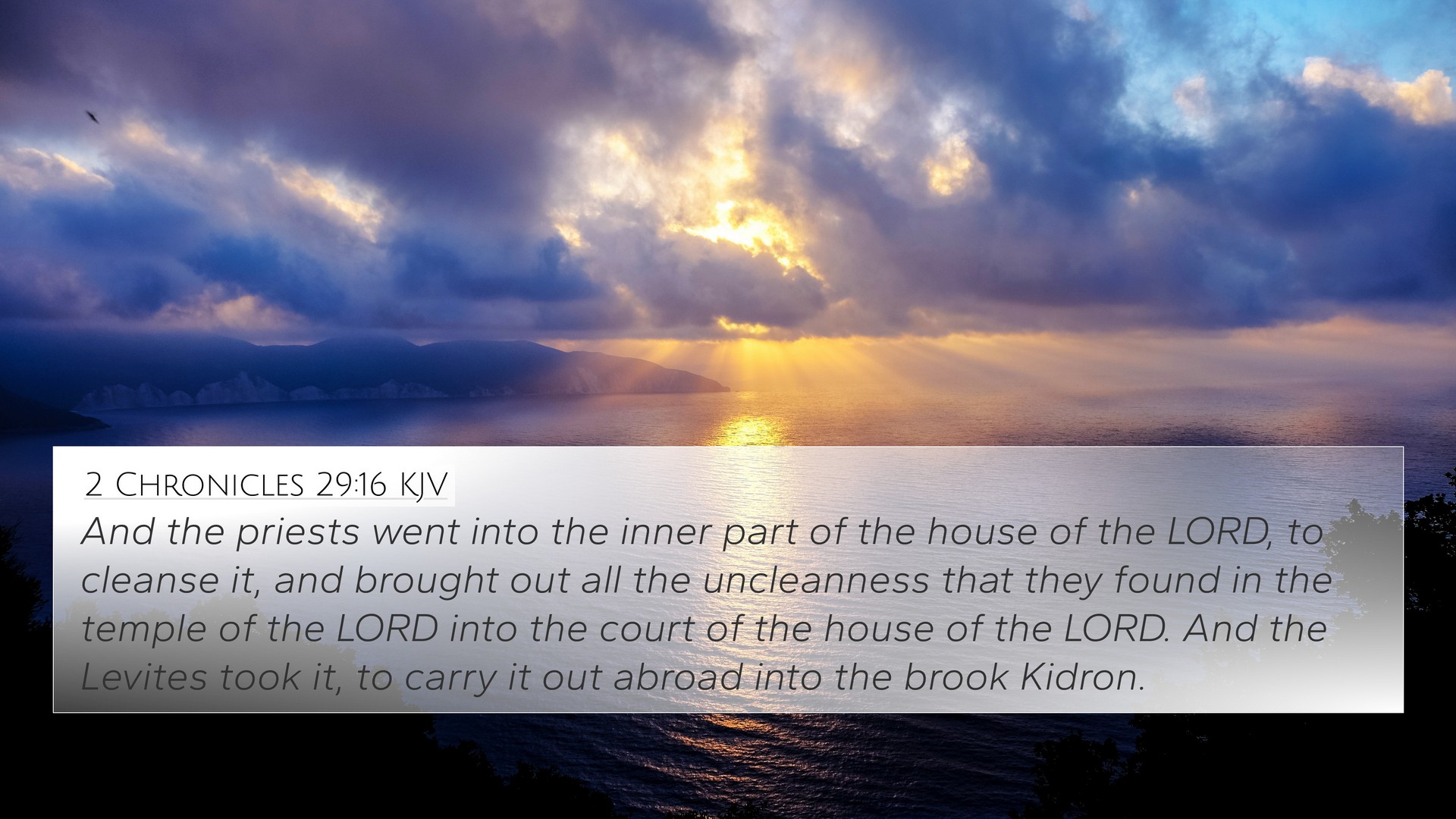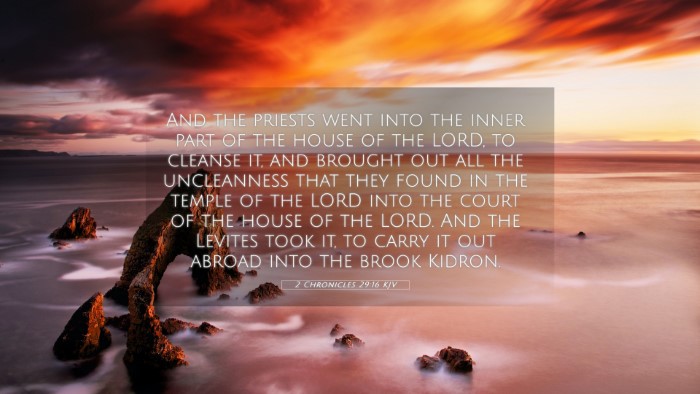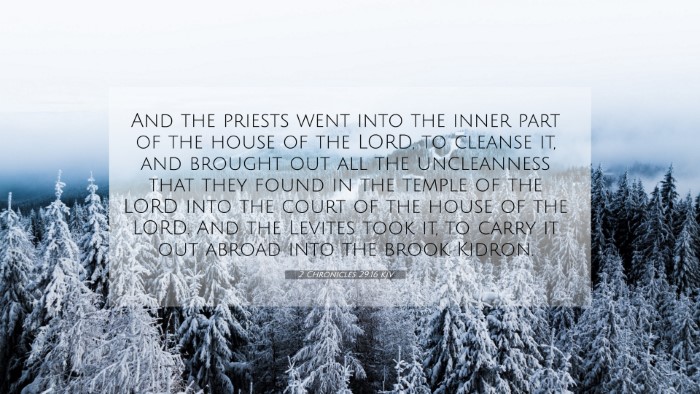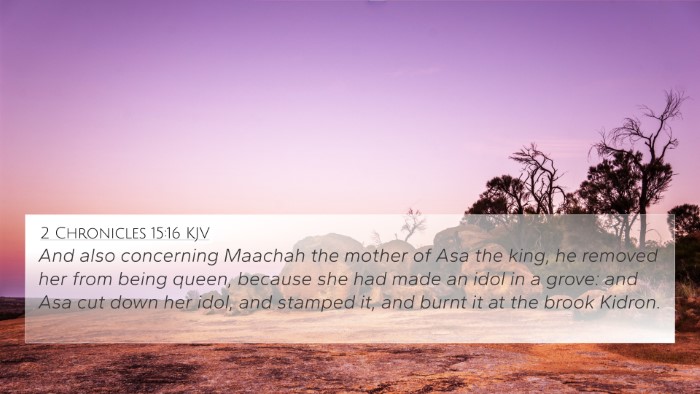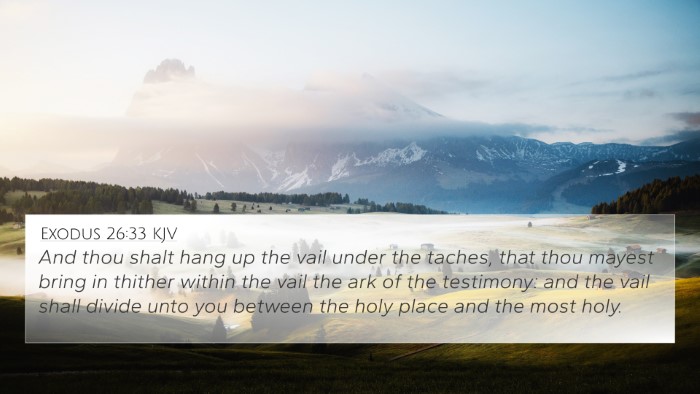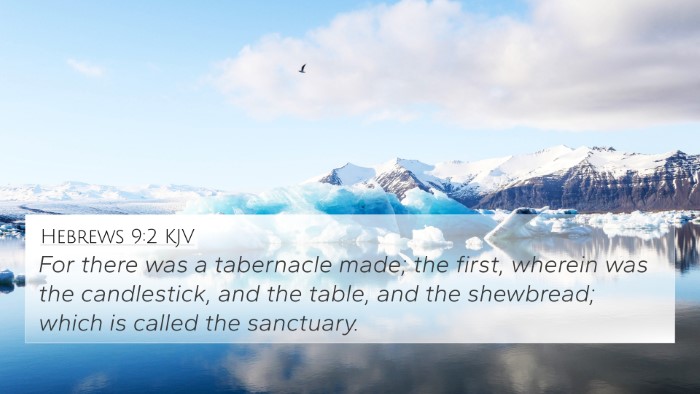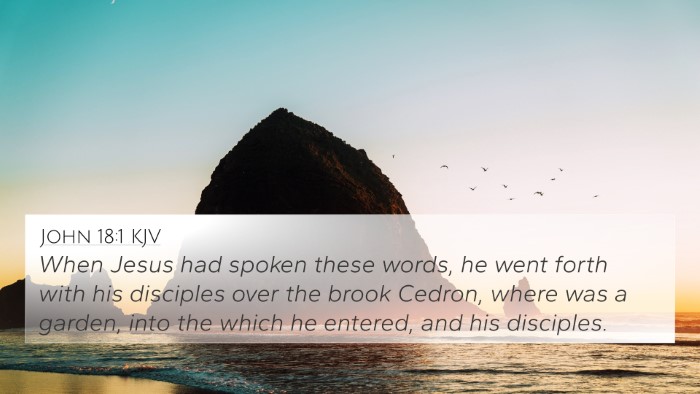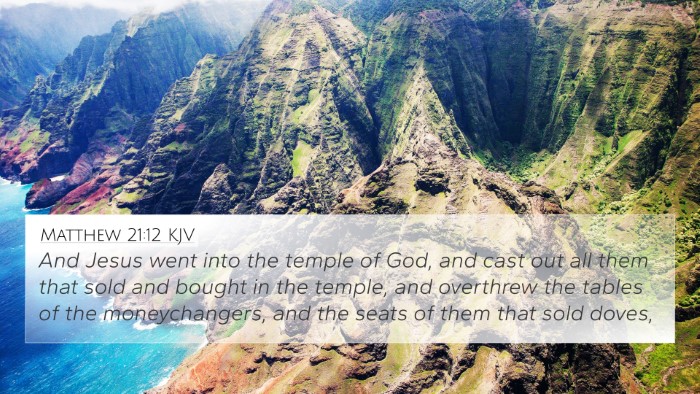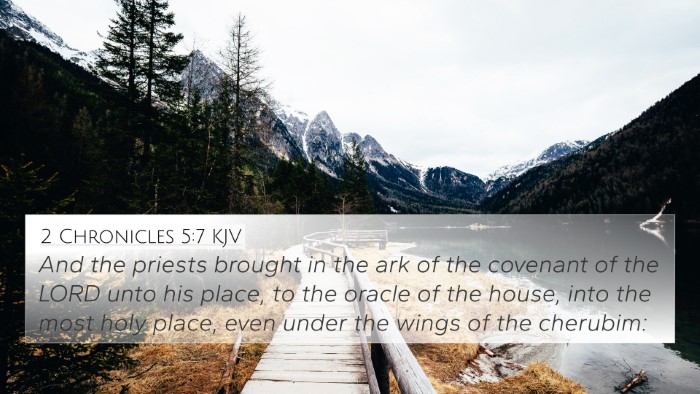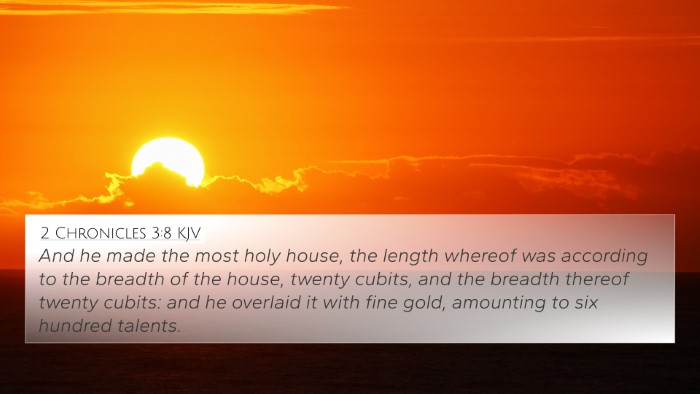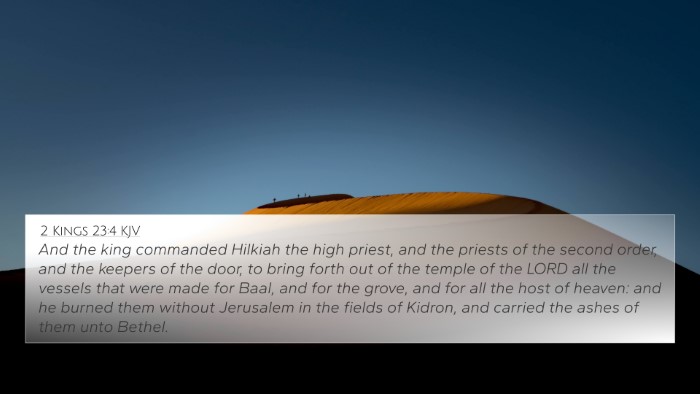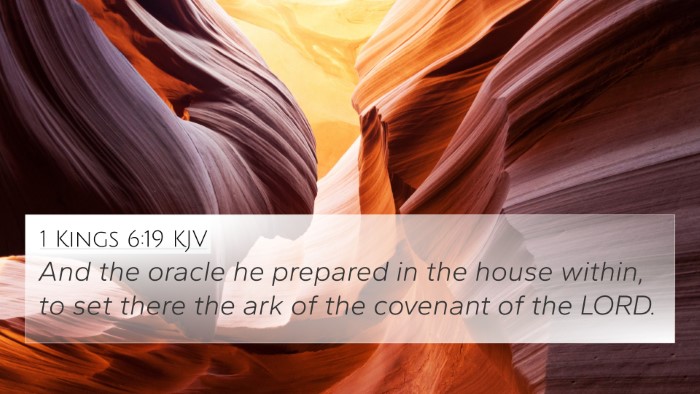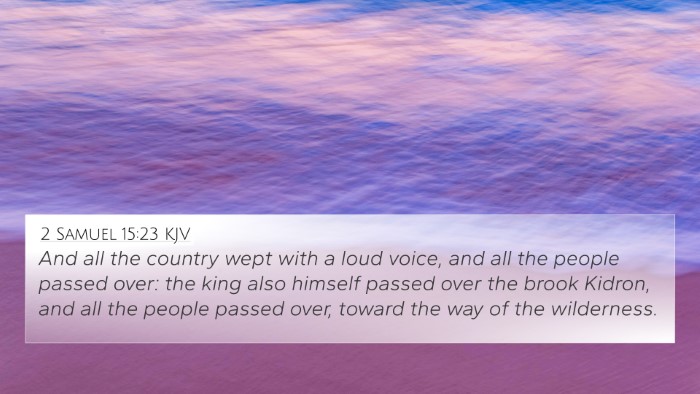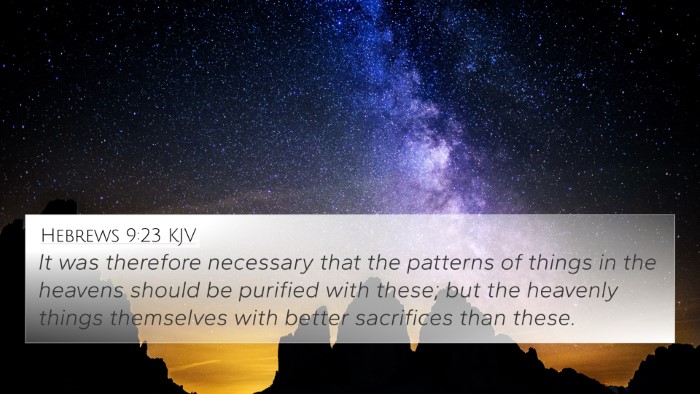Interpretation of 2 Chronicles 29:16
The verse reads: "And the priests went into the inner part of the house of the Lord, to cleanse it, and brought out all the uncleanness that they found in the temple of the Lord into the court of the house of the Lord. And the Levites took it, to carry it out abroad into the brook Kidron."
Summary of Meaning
This passage emphasizes the critical act of cleansing the temple, reflecting a renewed commitment to holiness and the proper worship of God. After a time of neglect and impurity, King Hezekiah's reforms led to a restoration of worship practices.
Insights from Commentaries
-
Matthew Henry's Commentary:
Henry highlights the importance of the temple's purity, noting that the priests performed a crucial duty by seeking out and removing all that was unclean, signifying a fresh start in the people's worship.
-
Albert Barnes' Notes:
Barnes provides context by explaining that the priests' actions were a direct response to Hezekiah's orders for spiritual renewal. He underscores that the act of cleansing signifies returning to God’s ways after periods of apostasy.
-
Adam Clarke's Commentary:
Clarke points out that the brook Kidron symbolizes the removal of sin and impurity. He emphasizes the thoroughness of the priests and Levites in their holy tasks, representing a societal restoration to God’s favor.
Bible Verse Cross-References
This verse connects to several other scriptures that emphasize purity and restoration:
- 2 Kings 23:4-5: The removal of idolatrous worship from the temple.
- Psalms 51:7: A prayer for purification, echoing themes in the cleansing of the temple.
- Isaiah 52:1: An exhortation to awaken and put on strength, paralleling the theme of spiritual renewal.
- Zephaniah 3:9: Promises of pure worship from a purified people.
- 1 Peter 2:5: Believers are called to be a holy priesthood, linking New Testament practices to Old Testament themes.
- Hebrews 9:13-14: The cleansing of the conscience ties into the physical cleansing of the temple.
- Matthew 21:12-13: Jesus clearing the temple, aligning with the theme of restoring holiness in worship.
Thematic Connections
2 Chronicles 29:16 emphasizes themes of:
- Holiness: The text reflects the need for purity among God's people.
- Restoration: It signifies a turning point back to God after spiritual decline.
- Leadership: The role of King Hezekiah in prompting spiritual reforms and cleansing.
- Community Action: The collective effort of the priests and Levites demonstrates the communal aspect of worship.
Tools for Bible Cross-Referencing
To fully understand the connections and themes of 2 Chronicles 29:16, one may utilize:
- Bible concordance for finding related verses.
- Cross-reference Bible study tools to explore themes across the scriptures.
- Bible cross-reference guides that categorize verses by themes.
- Comprehensive Bible cross-reference materials for deeper analysis.
Inter-Biblical Dialogue
Studying 2 Chronicles 29:16 encourages exploration of the dialogues that occur between scripture:
- Identifying connections between the Old and New Testaments enhances understanding of Christ as the ultimate fulfillment of temple themes.
- Comparative studies between Gospels highlight how the cleansing of the temple informs Christian theology on purity and repentance.
Concluding Thoughts
2 Chronicles 29:16 serves as a potent reminder of God's desire for purity among His people, rooted in the historical practices of Israel and pointing forward to the ultimate cleansing through Christ. Utilizing cross-references opens up a deeper understanding of Biblical themes, illustrating how scripture speaks to contemporaneous believers.
